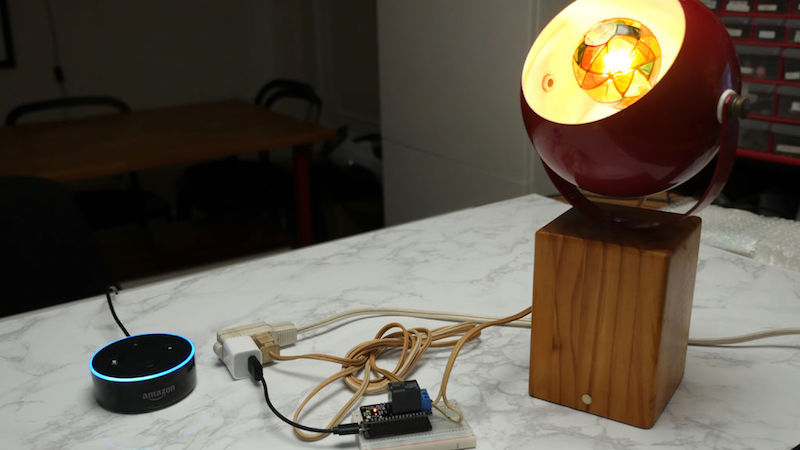Barking commands at furniture seems a bit odd but with voice controlled home automation platforms becoming the norm, you may be spending more time talking to your light fixtures than your kids. In one such project, [Becky Stern] used an Alexa Dot and an ESP8266 respond to voice commands.
The design uses the Alexa Dot to interpret voice commands such as ‘Alexa turn the light ON’. The ESP8266 with a relay feather wing is used to switch the actual lamp ON and OFF. The glue between the two is the fauxmoESP library that allows the ESP8266 to receive commands from the Alexa API.
The best part of the project is the lamp itself which has a wooden base and is perfect for such experiments. [Becky Stern] does a wonderful job at carving out enough space and filling it with the electronics. The additional sanding and wood staining make the project more impressive and worthy of a living room. The idea could be easily extended to other own household items. Check out the video of the project below and for more inspiration, take a look at Theia IoT Light-Switch.
















Great video and the fauxmoesp is a great library, something to code this evening. Spot on hack-a-day
Conversely, with forniphilia, barking commands at furniture probably isn’t odd at all. Best to keep the kids out of that though.
Nice hack buut I am not quite sure how safe this is.. I mean to put a 220V relay inside of a wooden box and put that box in you bedroom?
A lampshade is fabric around a hot bulb.
Everything is a fire hazard.
At least the table looks safe.
If you make the bulb LED, it is still powered by mains electrical but at least it is mostly low voltage. Plus, the fabric should in theory be fire resistant. One could feed the bulb 12 volts of DC directly and then it wouldn’t generate enough heat to be a fire hazard but still light up just fine.
The difference being that until the last decade or so, a fifty cent bulb and a metal ring and a strip of fabric was awfully cheap compared to an actual multiples of the original price, LED light fixture.
Don’t get me started on the stupidity of the NEMA 5-15 design though.
You making fun of our dangerous plugs? ;)
Not making fun of them. Pointing out how utterly unsafe they are compared to basically all other modern countries electrical connections. Some even have fuses installed in the plug by default!
The hardware product is called Echo Dot
If you’re only going to turn toggle the light, why not use a bandpass filter, electret microphone and latching relay? No micro controllers needed, can’t be broken when the Alexa API is altered, and it’s cheaper, faster, simpler, etc.
All you would do is look for a clap at x frequency and is that is level is above y threshold, flip on the latching relay via a buffer.
I am nearing 50% of hue lights in my house, Alexa was introduced only two months ago in the kitchen with an echo dot. The second echo dot will be installed soon. Me and my wife have no problem talking to our house.
This project might help me add more iot to my house for the things not offered by philips.